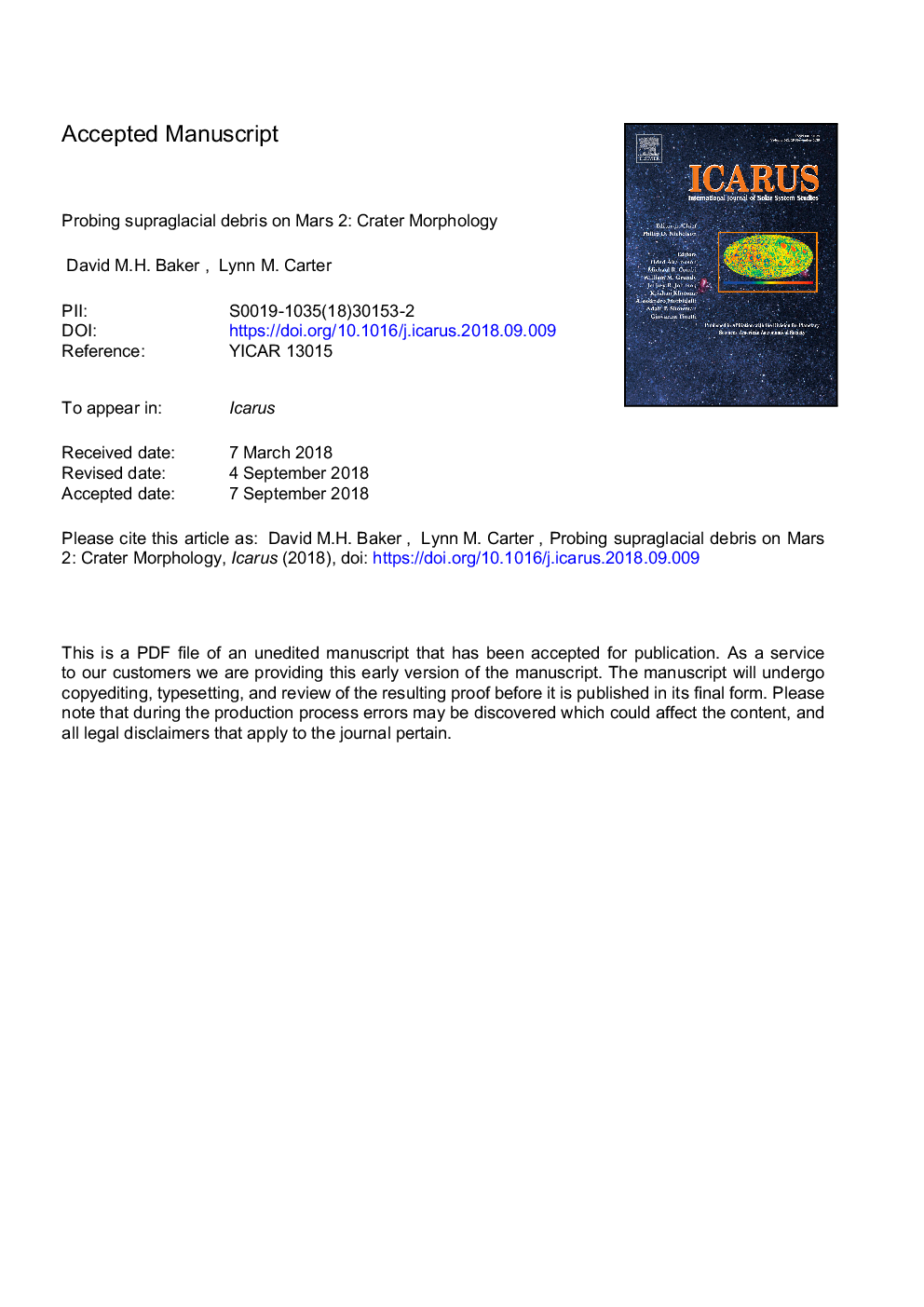| کد مقاله | کد نشریه | سال انتشار | مقاله انگلیسی | نسخه تمام متن |
|---|---|---|---|---|
| 11026362 | 1666392 | 2019 | 44 صفحه PDF | دانلود رایگان |
عنوان انگلیسی مقاله ISI
Probing supraglacial debris on Mars 2: Crater morphology
ترجمه فارسی عنوان
ترسیم آوارهای سوپراسکوئیک در مریخ 2: مورفولوژی گلخانه
دانلود مقاله + سفارش ترجمه
دانلود مقاله ISI انگلیسی
رایگان برای ایرانیان
کلمات کلیدی
موضوعات مرتبط
مهندسی و علوم پایه
علوم زمین و سیارات
علوم فضا و نجوم
چکیده انگلیسی
Lobate debris aprons (LDA), lineated valley fill (LVF), and concentric crater fill (CCF) on Mars, interpreted to be debris-covered glaciers, possess craters with a suite of distinct interior landforms (called “ring-mold craters”) that have been attributed to the presence of glacial ice at depth or surface modification processes. We tested current hypotheses for the formation of ring-mold craters by conducting a comprehensive analysis of the size and morphology of 16,457 impact craters â¥125â¯m in diameter formed within glacial deposits in Deuteronilus Mensae. Two major groups, bowl-shaped craters and ring-mold craters, are found, with at least nine distinct crater types. While there is statistical difference in median diameters between these crater types, this difference is relatively small and is within the estimated uncertainty in diameter measurements and may be related to more enhanced erosion of the rims of ring-mold craters. Clear degradation sequences are observed, supporting a role for post-impact modification in producing at least some of the diversity in crater landforms. The spatial density of ring-mold craters is also directly correlated with the development of LDA, LVF, and CCF surface textures. Flow lineations cross-cut two ring-mold crater types but they maintain their circular planforms in some cases, suggesting that the craters initially formed completely within mantling layers deposited after glacial flow had ceased. We also find analogous craters in non-glacial units; glacial ice is therefore not required to form the observed morphologic diversity. Our observations are most consistent with formation of crater landforms by emplacement and modification of at least two depositional episodes of icy dust (i.e., “mantle”). This mantle was initially tens of meters in thickness to support crater formation, and has experienced much downwasting and erosion since emplacement. Derived crater retention ages of 460 Ma for LDA, LVF, and CCF features in the region therefore reflect deposition of mantle units and only give a very minimum age for the formation of LDA, LVF, and CCF.
ناشر
Database: Elsevier - ScienceDirect (ساینس دایرکت)
Journal: Icarus - Volume 319, February 2019, Pages 264-280
Journal: Icarus - Volume 319, February 2019, Pages 264-280
نویسندگان
David M.H. Baker, Lynn M. Carter,
